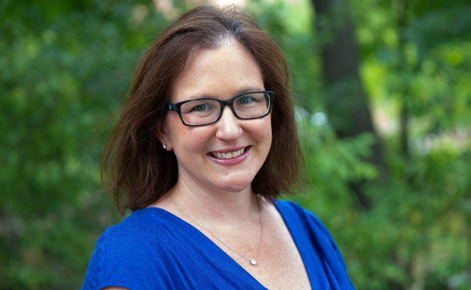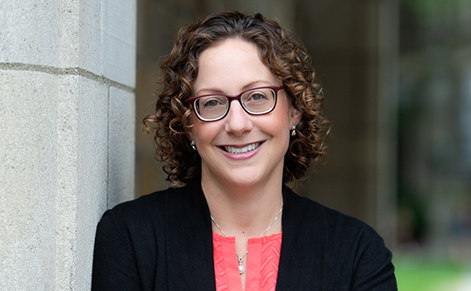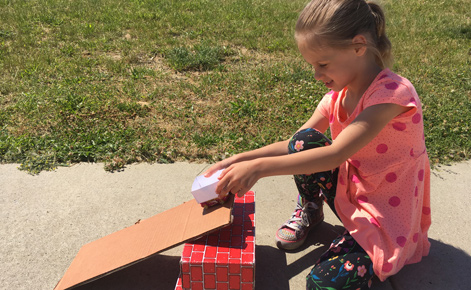Scholars from the Michigan State University College of Education are joining a multi-state effort to develop, distribute and evaluate open-access elementary science and literacy curricula and professional development materials. The OpenSciEd consortium project, led by Northwestern University, shares $7.5 million across six partner institutions; MSU’s sub-contract is for $1.5 million.
Leading the work at MSU are Amelia Wenk Gotwals and Tanya S. Wright, both faculty in the Department of Teacher Education. The scholars are leading the effort on K-2 curriculum material design, integration of literacy across K-5 grades and integration of assessment across K-5. The work builds on the successful SOLID Start curriculum—free, existing integrated science and literacy curricula and professional development for K-2 classrooms created by Gotwals and Wright.

“We know that when teachers use the SOLID Start materials, we see better science learning and literacy outcomes,” said Gotwals. “We’re also finding that when teachers use the materials, the amount and quality of science talk in their classrooms is significantly better than when teachers use other materials.”
Added Wright: “We’re excited to think about how we can revise these materials to be used by an even broader audience.”
The OpenSciEd project is part of a national effort to provide freely available science curriculum and professional development materials for teachers. Middle and high school materials are already under development. This effort will focus on elementary classrooms and will include the SOLID Start materials.
The critical problem, Gotwals and Wright say, is that few high-quality materials for grades K-5 currently exist. The existing materials do not systemically integrate literacy or mathematics and are often for sale, which present challenges for districts with limited funding.

Moreover, national data shows that “the large majority of elementary science teachers do not feel very well prepared to teach science.” This may be part of the reason of why science instruction is limited, at best, in elementary classrooms across the nation. According to the same data—from the National Survey of Science and Mathematics Education’s 2018 Status of Elementary School Science report—”the large majority of elementary classes receive science instruction only a few days of the week or during some, but not all, weeks of the year.” These same classes only spent an “average of 17 minutes per day” on science instruction.
OpenSciEd is improving the tools available by having several states—California, Iowa, Louisiana, Massachusetts, Michigan, New Jersey, New Mexico, Oklahoma, Rhode Island and Washington—gather robust data on the efficacy and sustainability of materials developed. As evaluations are completed, the materials will be freely available, with the goal of all elementary curriculum and professional development components fully online and accessible by any teacher in any state by 2026.
Beyond effective materials, the entire OpenSciEd consortium is also committed to materials and strategies that are responsive to student lives and needs.

“We are thinking carefully about how we are supporting kids across a broad ranges of backgrounds, communities, languages and more,” said Wright. “All of the materials are intended to be culturally sustaining.”
The work is funded by the Gates Foundation, the Carnegie Foundation, the Shusterman Foundation and the Hewlett Foundation.
“All students should have access to and an opportunity to learn from high quality science and literacy materials, starting in kindergarten,” said Gotwals. “OpenSciEd will allow us to reach students across the country.”
SOLID background
Since 2014, Gotwals and Wright have been working with teachers and districts to better understand how to support science in the context of elementary classrooms.
When the SOLID Start—or Science, Oral Language, and Literacy Development from the Start of School—were released online in 2020, they made a large leap in addressing a critical learning gap. SOLID Start is a compilation of resources focused on two key points: supporting students’ scientific sensemaking, and helping teachers to implement high quality, integrated science and literacy instruction in classrooms.
“My students were captivated,” said one early adopter, who used the program with kindergarteners in a Michigan classroom. “They were able to have open conversation and offer up excellent ideas, which showed me they were excited about doing the activities but also understanding so many of the concepts.”

Hundreds of teachers in Michigan, Colorado and Washington have already incorporated SOLID Start materials into their classrooms. The OpenSciEd project will allow SOLID Start to expand even further, and reach even more schools, teachers and students across the country.
As part of the grant, Gotwals will bring her experience with science and is responsible for the K-5 integration of formative assessment. Wright will share her expertise in literacy and is responsible for K-5 literacy integration. Together, they are responsible for the overall K-2 curriculum development.
They will be joined by new faculty member Curtis L. Lewis, who has background in mathematics education, and Amber Bismack, an assistant professor at Oakland University who is graduate of MSU’s Teacher Preparation Program and a former postdoctoral researcher on the SOLID Start project. Other institutions in the elementary development consortium include University of Texas at Austin, BSCS Science Learning and Horizon Research, Inc.




